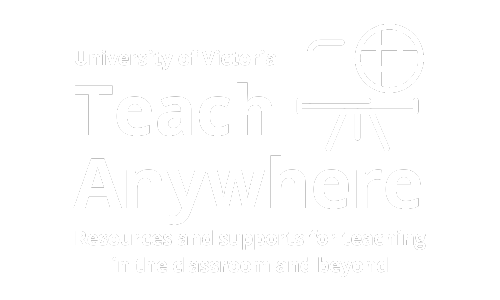Peer review of teaching involves two types of assessment, formative and summative. In this module, you will learn more about these types as well as principles and planning considerations.
In this section
Further resources
Types of assessment
There are two types of evaluative processes used to assess teaching, described as follows:
The formative approach
Formative peer review of teaching is designed to provide feedback that is not evaluative in nature. Rather, the purpose of formative peer review of teaching is to identify areas for improvement, offer suggestions and advice to enhance practice. Formative peer review of teaching is typically informal and can take many forms, such as informal discussions, draft reviews and feedback on early ideas. In general, formative peer review of teaching is considered a promising practice within the broader umbrella of peer review as it gives the reviewee a chance to experiment, try new approaches and get feedback that is not formalized. The spirit of formative peer review of teaching is a mentorship and development approach.
The summative approach
Summative peer review of teaching, has an evaluative focus and is used for decision making purposes: e.g., for tenure and promotion. The purpose of summative peer review of teaching is to provide an overall assessment of an instructor, including strengths and weaknesses and to follow procedures articulated in a faculty’s respective academic unit.
Both types of peer review of teaching can be valuable in improving the quality of instruction and help faculty to grow and develop in their field.
Principles that inform process
Regardless of the type of review conducted, it is important that peer review of teaching follows the following principles:
Accuracy and credibility
Accuracy and credibility ensure the evaluation is based on factual evidence and expert knowledge. Additionally, consistent implementation of the process, trained reviewers and consideration of all relevant facets of teaching are crucial in producing a comprehensive and reliable assessment.
Integrity
Criteria for effective teaching should be established to ensure integrity. This includes the use of multiple reviewers, an arms-length approach, confidentiality and ethical conduct.
Transparency
Transparency includes clear policies and procedures, and evidence that is well documented.
By adhering to these principles, the peer review of teaching process can be conducted in a manner that is objective, reliable, and beneficial for all parties involved.
Planning considerations
As a department planning for peer review, you will need to consider how you arrange the process. This can include any administrative components such as use of a communal peer review document, as well as communicating to faculty the purpose of reviewing your peers, the role of professional development and the process of reviewing. You also need to consider how to keep information collected confidential. If any issues arise, consult with your Chair.
Faculty and instructors can also plan for review by thinking of who to ask to review them (remembering it must be at arms length) and when would be the best time for peer review of teaching.
Explore the sections
Peer Review of Teaching Learning Guide: Process and Criteria
Learn the four steps of peer review: pre-observation, observation, post-observation and reflective summary
Peer Review of Teaching Learning Guide: Template
Use our peer review template in your department and explore additional opportunites for learning and training


